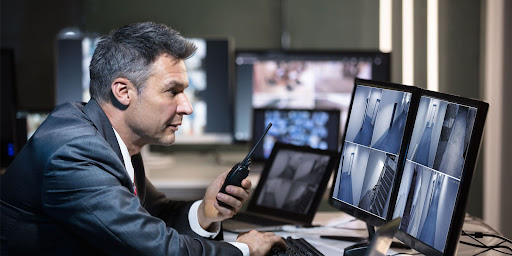Corporate security services have undergone significant evolution over the years, driven by advancements in technology, changes in the business landscape, and evolving threats and risks. This article explores the historical evolution of corporate security services, examines current trends and innovations shaping the industry, and discusses the future outlook for corporate security.
Historical Evolution of Corporate Security Services:
- Traditional Security Guards:
- In the early days, corporate security primarily relied on physical security measures such as security guards stationed at entrances, patrols, and access control systems to protect premises and assets.
- Emergence of Surveillance Systems:
- With the advent of surveillance technology, companies began installing closed-circuit television (CCTV) cameras to monitor and record activities within corporate facilities, enhancing security and providing evidence in case of incidents.
- Introduction of Access Control:
- Access control systems, including keycards, biometric scanners, and electronic locks, became widespread, allowing companies to manage and restrict entry to sensitive areas based on individual credentials.
- Rise of Cybersecurity:
- As businesses increasingly relied on digital technologies and data, cybersecurity emerged as a critical aspect of corporate security, with a focus on protecting networks, systems, and sensitive information from cyber threats such as malware, phishing, and data breaches.
Current Trends and Innovations in Corporate Security Services:
- Integration of Physical and Cybersecurity:
- Modern corporate security solutions integrate physical security measures with cybersecurity controls to provide holistic protection against a wide range of threats. This convergence allows companies to monitor and respond to security incidents more effectively across both physical and digital environments.
- Adoption of Artificial Intelligence (AI) and Machine Learning:
- AI and machine learning technologies are being leveraged to enhance corporate security capabilities, including threat detection, anomaly detection, predictive analytics, and automated response. These technologies enable faster and more accurate identification of security threats and help organizations proactively mitigate risks.
- Cloud-Based Security Solutions:
- Cloud-based security solutions offer scalability, flexibility, and cost-effectiveness for corporate environments, allowing companies to deploy and manage security controls such as antivirus, intrusion detection, and data encryption from centralized cloud platforms.
- Mobile Security and Remote Monitoring:
- With the rise of remote work and mobile devices, corporate security services are adapting to provide protection for employees working outside traditional office environments. Mobile security solutions, including mobile device management (MDM) and secure VPNs, enable secure access to corporate networks and data from anywhere.
- Internet of Things (IoT) Security:
- The proliferation of IoT devices in corporate environments presents new security challenges, as these devices often lack built-in security features and are vulnerable to exploitation. Corporate security services are developing IoT security solutions to secure connected devices and mitigate the risks associated with IoT deployments.
- Threat Intelligence and Predictive Analytics:
- Corporate security services are increasingly leveraging threat intelligence feeds, data analytics, and machine learning algorithms to identify emerging threats, trends, and patterns, allowing organizations to proactively anticipate and mitigate security risks before they escalate into incidents.
Future Outlook for Corporate Security Services:
- Continued Convergence of Physical and Cybersecurity:
- The integration of physical and cybersecurity will deepen further, with companies investing in unified security platforms that provide seamless visibility and control across both domains.
- Enhanced Automation and Orchestration:
- Automation and orchestration capabilities will continue to evolve, enabling faster response times, streamlined workflows, and more efficient management of security incidents.
- Focus on Proactive Threat Hunting:
- Corporate security services will shift towards proactive threat hunting and continuous monitoring to stay ahead of evolving threats and prevent security breaches before they occur.
- Emphasis on Resilience and Business Continuity:
- With the increasing frequency and sophistication of security threats, organizations will place greater emphasis on resilience and business continuity planning to ensure they can recover quickly from security incidents and maintain operations.
Conclusion:
The evolution of corporate security services reflects the dynamic nature of security threats and the need for organizations to adapt and innovate in response. By embracing trends and innovations such as integration of physical and cybersecurity, AI and machine learning, cloud-based security solutions, and proactive threat hunting, companies can enhance their security posture and protect their assets, employees, and reputation in an increasingly complex threat landscape. Looking ahead, the future of corporate security services will be characterized by continuous innovation, collaboration, and a proactive approach to mitigating emerging risks.




